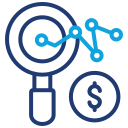
Making Sense of Savings: The Cost-Effectiveness of Cloud-based Accounting Solutions
Chosen theme: Cost-Effectiveness of Cloud-based Accounting Solutions. Explore how modern cloud accounting tools trim wasteful spend, unlock productivity, and deliver measurable financial value without sacrificing control. Join the discussion, subscribe for future insights, and share your cost wins or worries so we can tackle them together.
Where the Money Goes: Understanding Total Cost of Ownership
Licenses versus Subscriptions: Paying for Value, Not Shelfware
Perpetual licenses often appear cheaper until maintenance, upgrade fees, and idle seats surface. Subscription models roll updates, support, and security into predictable costs, aligning spend to actual usage while limiting the drag of unused features.
Hardware You Never Buy, Power, or Replace
Cloud-based accounting removes server purchases, storage expansions, backup appliances, and disaster recovery hardware. You avoid depreciation schedules, power and cooling costs, and weekend maintenance marathons that quietly inflate your operational expenditure each quarter.
Hidden Line Items Too Easy to Miss
Consider downtime, patching delays, integration breakage, and training cycles. Factor in consultant hours, version conflicts, and after-hours fixes. Cloud platforms centralize updates and reduce these frictions, translating technical stability into real financial savings.
Scaling Smarter: Elastic Costs that Track Business Reality
Handle Peaks Without Paying for Idle Valleys
Busy tax seasons, audits, and funding rounds spike workloads. Elastic cloud capacity absorbs peaks without forcing year-round provisioning. When demand calms, costs shrink, preserving capital for initiatives that actually grow margins.
Expand Geographically Without Infrastructure Sprawl
Opening new regions rarely requires new servers or data centers. Provision users, fine-tune permissions, and localize compliance settings. Your cost profile stays clean while your teams collaborate on one consistent financial backbone.
From Startup Scrappiness to Enterprise Discipline
Early-stage teams avoid heavy upfront investments while enterprises tame sprawling tool stacks. As needs mature, modules and integrations can be added deliberately, ensuring the cost curve bends toward value rather than complexity.
Shared Responsibility, Real Financial Impact
Providers harden infrastructure, encrypt data, and monitor threats continuously. Your team focuses on policies and access. Splitting duties reduces duplicated effort and decreases the chance of costly misconfigurations that lead to preventable incidents.
Audit-Ready Trails and Automated Controls
Granular logs, segregation of duties, and approval workflows are built in. Automated evidence collection lightens audit preparation, transforming a multi-week scramble into a structured process that saves consulting hours and staff overtime.
Breach Economics and Risk Transfer
Industry studies place average breach costs in the millions. Centralized security controls, rapid patching, and stronger identity management reduce exposure. Lower risk can influence insurance premiums and avoid reputational damage that erodes revenue.
Productivity Dividends: When Time Saved Becomes Real Savings
Bank feeds, rules-based categorization, and automated reconciliations eliminate manual keystrokes. Fewer errors mean fewer reworks. Finance shifts from clerical tasks to analysis, uncovering savings opportunities previously buried in spreadsheets and email threads.
Shared ledgers, standardized approval flows, and in-context comments reduce meetings. Stakeholders see the same numbers, in the same system, at the same time, making decisions faster and limiting the costly drift of misalignment.
Cloud access lets controllers resolve issues on the go, not days later. Month-end bottlenecks dissolve as tasks move forward asynchronously, turning calendar time into value while keeping overtime and stress under control.

Anecdotes from the Ledger: Real Stories of Savings
A fifteen-person agency migrated billings and payroll to a cloud suite. Power costs vanished, weekend maintenance ended, and a surprise rainy-day outage became a footnote. Savings funded a new client acquisition pilot.

Measuring What Matters: Build Your Cost-Effectiveness Scorecard
Capture current software, hardware, labor, and downtime costs. Include frequency of rework, audit adjustments, and consulting fees. A transparent baseline makes future savings visible and keeps optimism from outrunning reality.


Measuring What Matters: Build Your Cost-Effectiveness Scorecard
Monitor close duration, reconciliation backlog, automation coverage, and approval cycle time. Leading indicators predict savings before invoices arrive, letting you course-correct early and sustain momentum across quarters and fiscal years.
Join our mailing list
